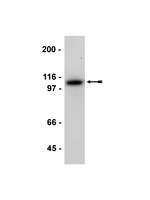07-697-25UL Sigma-AldrichAnti-E-Cadherin
Detect E-Cadherin using this Anti-E-Cadherin Antibody validated for use in Immunohistochemistry and WB.
More>> Detect E-Cadherin using this Anti-E-Cadherin Antibody validated for use in Immunohistochemistry and WB. Less<<Recommended Products
Overview
| Replacement Information |
|---|
Key Specifications Table
| Species Reactivity | Key Applications | Host | Format | Antibody Type |
|---|---|---|---|---|
| H | WB, IHC | Rb | Serum | Polyclonal Antibody |
| References |
|---|
| Product Information | |
|---|---|
| Format | Serum |
| HS Code | 3002 15 90 |
| Presentation | Serum with 30% glycerol. |
| Quality Level | MQ100 |
| Physicochemical Information |
|---|
| Dimensions |
|---|
| Materials Information |
|---|
| Toxicological Information |
|---|
| Safety Information according to GHS |
|---|
| Safety Information |
|---|
| Storage and Shipping Information | |
|---|---|
| Storage Conditions | 2 years at -20°C from date of shipment |
| Packaging Information | |
|---|---|
| Material Size | 25 µL |
| Transport Information |
|---|
| Supplemental Information |
|---|
| Specifications |
|---|
| Global Trade Item Number | |
|---|---|
| Catalog Number | GTIN |
| 07-697-25UL | 04054839337802 |
Documentation
Anti-E-Cadherin SDS
| Title |
|---|
Anti-E-Cadherin Certificates of Analysis
| Title | Lot Number |
|---|---|
| Anti-E-Cadherin - 3318614 | 3318614 |
| Anti-E-Cadherin - 3936251 | 3936251 |
| Anti-E-Cadherin - 4139228 | 4139228 |









